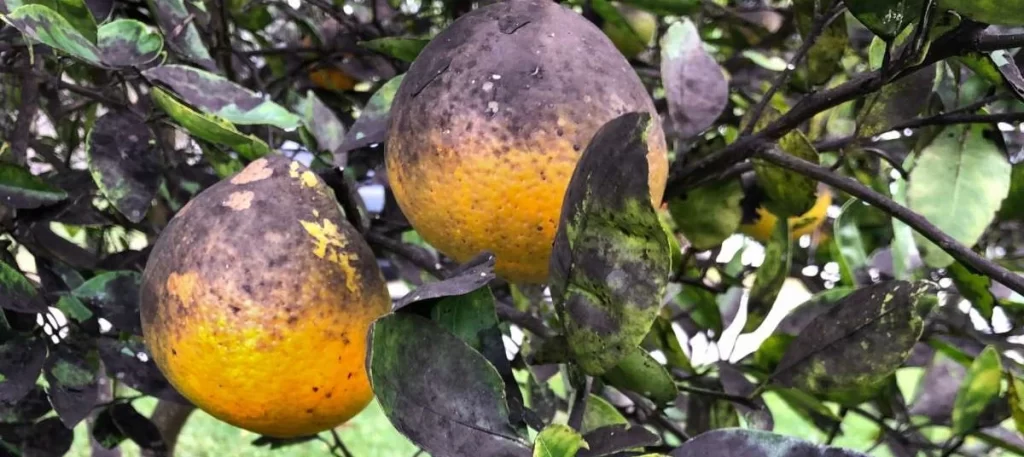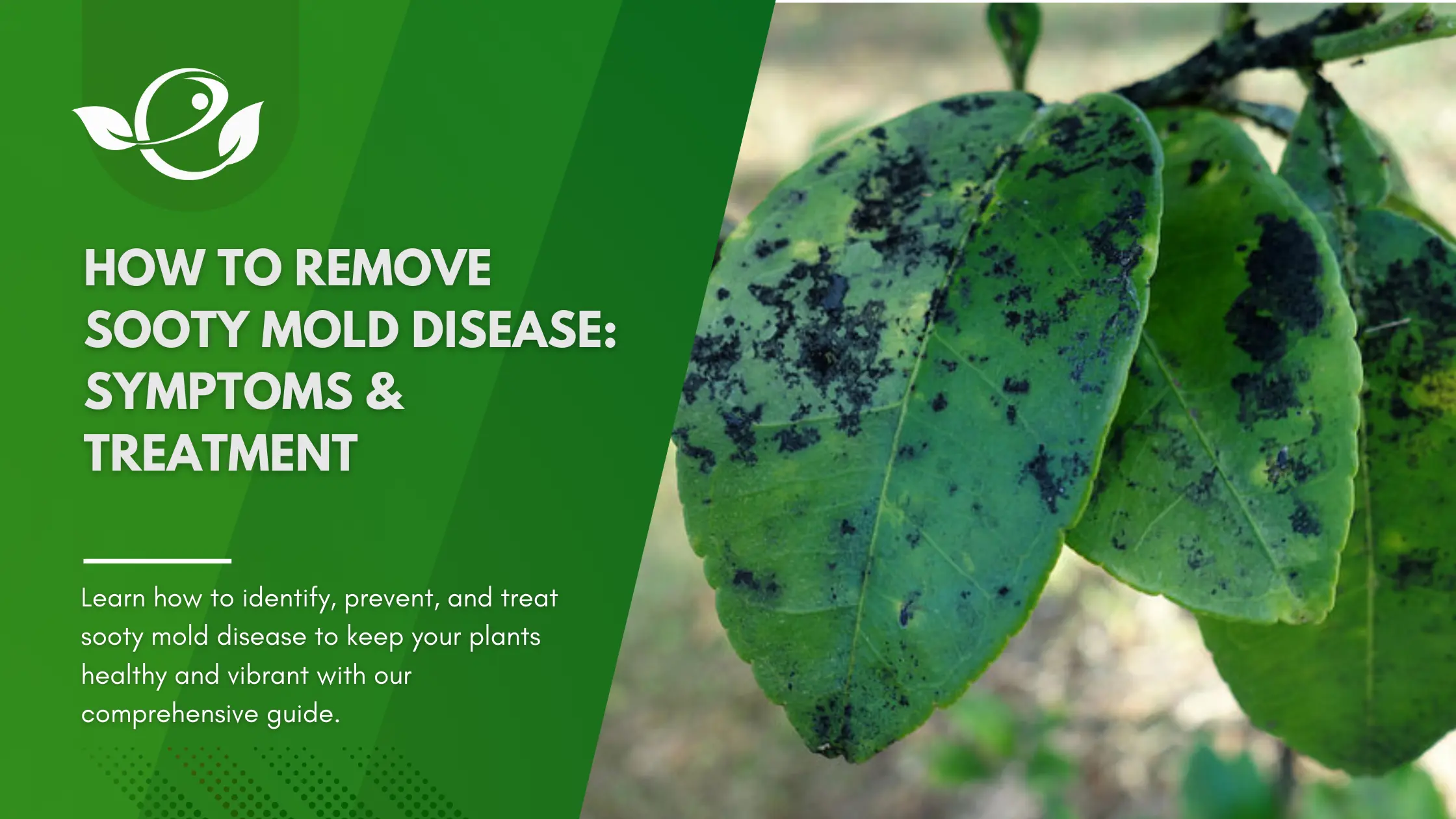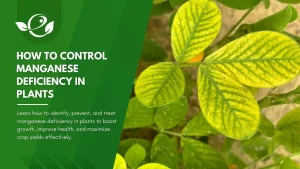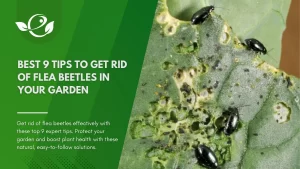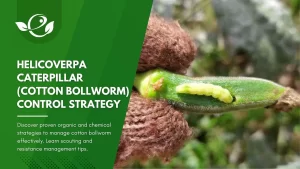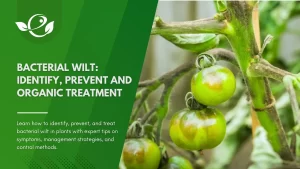Table of Contents
Imagine walking through your garden or farm, expecting to see vibrant, healthy plants, only to find leaves and stems covered in a black, sooty substance. This unsightly problem, known as sooty mold disease, can quickly transform lush greenery into a grimy mess, making plants look unhealthy and unattractive. Not only does it affect the aesthetic appeal of your plants, but it can also hinder their growth by blocking essential sunlight.
Sooty mold disease is a common issue faced by gardeners and farmers alike, caused by the growth of fungi on the sugary excretions (honeydew) left by sap-sucking insects such as aphids, whiteflies, and scale insects. While the mold itself does not penetrate plant tissues, its presence can have significant negative impacts on plant health.
In this comprehensive guide, we’ll explore everything you need to know about sooty mold disease. From identifying its telltale symptoms to implementing effective prevention and treatment strategies, you’ll be equipped with the knowledge and tools to combat this pervasive issue. Whether you’re a seasoned gardener or a novice, understanding how to manage sooty mold will help you maintain the beauty and health of your plants. Let’s dive in and uncover the secrets to keeping your garden free of sooty mold disease.
Understanding Sooty Mold Disease
What is Sooty Mold?
Sooty mold is a collective term for several species of fungi that grow on the sugary excretions (honeydew) produced by sap-sucking insects such as aphids, whiteflies, and scale insects. While the fungi themselves do not directly infect plant tissues, their presence can significantly affect plant health by blocking sunlight and hindering photosynthesis. Sooty mold’s name comes from the dark threadlike growth (mycelium) of the fungi resembling a layer of soot. Sooty mold doesn’t infect plants but grows on plant parts and other surfaces where honeydew deposits accumulate.
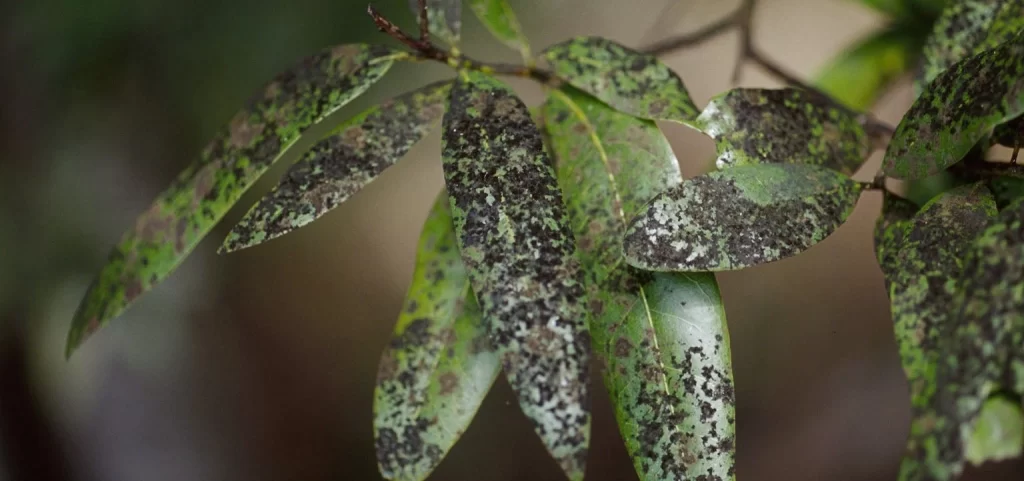
What caused it?
Phloem-feeding insects like the mango leafhopper (Amritodus atkinsoni), whiteflies, aphids and many others are associated with the disease as they feed on plant sap. In the process of feeding, honeydew is secreted on the surface of the plant, thereby creating the perfect medium for sooty mold to grow on. Honeydew can drip down on neighboring leaves or plants, thus spreading the fungus further. The fungi survive as mold or as spores on plant parts, tools or transport vehicles. Insects also spread the mold from plant to plant. Ants, for example, tend to protect the sooty mold colonies for their own benefit.
Can also be found in
Apple, Banana, Bean, Bitter Gourd, Citrus, Coffee, Cotton, Cucumber, Brinjal, Black & Green Gram, Grape, Guava, Maize, Mango, Melon, Okra, Olive, Papaya, Peanut, Capsicum & Chilli, Pomegranate, Potato, Sorghum, Soybean, Sugarcane, Tobacco, Tomato.
The Lifecycle of Sooty Mold
The lifecycle of sooty mold starts with the fungal spores landing on the honeydew-covered plant surfaces. These spores germinate and form black, thread-like structures called hyphae. In warm, humid environments, the mold spreads rapidly across the plant surface, forming a dense mat that blocks light and air. Understanding this lifecycle helps in timing preventive measures and treatments effectively.
Identifying Symptoms of Sooty Mold Disease
Primary Symptoms
- Sooty mold can be found on mango trees and any other plants that have previously been fed upon by insects. The mold grows on honeydew, a sticky, sugary secretion that is produced by some insects to attract fellow bugs. Using the honeydew as a food source, the mold gradually covers the surface of the affected plant part, coloring it in various shades of black.
- The most obvious sign of sooty mold is the appearance of black, soot-like patches on the surfaces of leaves, stems, and fruits. These patches are easy to spot and can cover large areas if left unchecked. The mold is not invasive but rather superficial, clinging to the sugary residues left by pest insects.
- Sooty molds are non-parasitic and non-pathogenic fungi, so they do not colonize plant tissues or trigger symptoms. However, they alter the ability of the plant to perform photosynthesis and to exchange gases with the atmosphere. Severely infected leaves may die and fall off, thereby affecting the plants growth and survival.
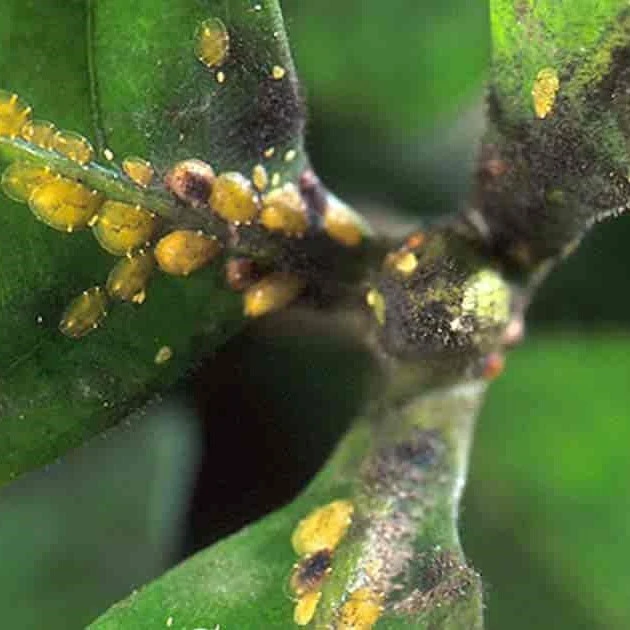
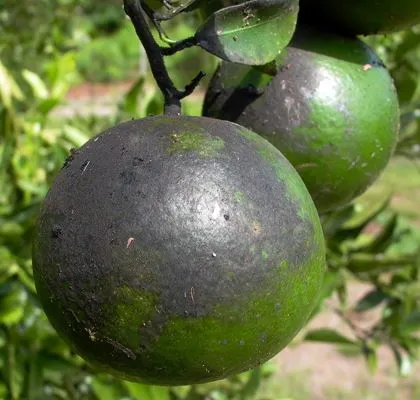
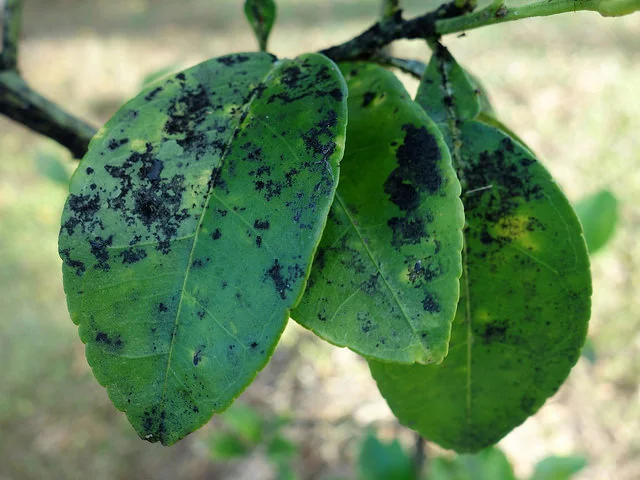
Secondary Symptoms
- Beyond the visible mold, affected plants may exhibit secondary symptoms due to impaired photosynthesis. These include stunted growth, yellowing or chlorosis of leaves, and overall reduced vigor.
- The presence of honeydew can also lead to other issues, such as attracting more pests or promoting the growth of other fungi and bacteria.
Preventing Sooty Mold Disease
- Biological Control: Introducing natural predators like ladybugs, lacewings, and parasitic wasps can help keep pest populations in check.
- Insecticidal Soaps and Oils: Regular application of insecticidal soaps or neem oil can reduce the number of pests without harming beneficial insects.
- Regular Monitoring: Frequent inspections of plants can help detect and manage infestations early before they become severe.
- Proper Watering: Water plants at the base rather than overhead to reduce leaf wetness, and avoid overwatering.
- Pruning: Regular pruning of dense foliage improves air circulation, reducing humidity around plants and making conditions less favorable for mold growth.
- Sanitation: Remove and destroy infected plant debris to reduce sources of fungal spores.
- Make sure to provide enough distance between the plants or trees and sufficient sunlight.
- Build physical barriers around trees or plants to prevent ants and plant sap-sucking insects from reaching them.
- Fertilize and water the trees sufficiently to ensure an optimal natural resistance of the trees to phloem-feeding parasites.
Treatment Methods for Sooty Mold Disease
Physical Removal
Physical removal is often the first step in treating sooty mold:
- Washing Off Mold: Gently wash affected plant parts with a solution of water and mild soap. Use a soft cloth or sponge to avoid damaging the plant surfaces.
- Pruning: Cut away heavily infested leaves and branches to reduce the fungal load and improve air circulation. Dispose of pruned material properly to prevent further spread.
Chemical Treatments
Always consider an integrated approach with preventive measures together with biological treatments if available. Synthetic insecticides of the organophosphate family can be used to prevent insects from feeding on the plant.
- Fungicides: Apply a fungicide specifically labeled for sooty mold. Follow the manufacturer’s instructions carefully to ensure safe and effective use. Commonly recommended fungicides include those containing copper or sulfur.
- Safety Precautions: Always wear protective gear when applying fungicides, and avoid treating plants during peak sunlight to prevent leaf burn.
Organic & Natural Remedies
Use formulations of neem oil, which is an organic broad spectrum compound, to ward off whiteflies, aphids, scales, ants, and mealy bugs. Neem oil also reduces the growth of the fungus itself. Insecticidal soap or dish soap (e.g. one tablespoon per 5 liters of water) can be sprayed on affected plants. After letting the soap solution settle on the plants, it can be rinsed off, thereby removing the mold.
- Baking Soda Solution: Mix one tablespoon of baking soda with a gallon of water and a few drops of dish soap. Spray this solution on affected plants to inhibit fungal growth.
- Vinegar Spray: A diluted vinegar solution (one part vinegar to three parts water) can also help reduce mold.
- Beneficial Insects: Introduce or encourage beneficial insects that prey on the honeydew-producing pests.
Long-term Management and Prevention
Integrated Pest Management (IPM)
Integrated Pest Management (IPM) combines multiple strategies for sustainable pest control:
- Biological Controls: Use natural predators and beneficial insects to keep pest populations low.
- Cultural Practices: Implement proper watering, pruning, and sanitation practices.
- Mechanical Controls: Use physical barriers or traps to reduce pest numbers.
- Chemical Controls: Apply pesticides only as a last resort and in combination with other methods.
Seasonal Maintenance
Effective management of sooty mold requires year-round attention:
- Winter: Clean up and remove plant debris to reduce overwintering pests.
- Spring: Inspect plants regularly and apply preventive treatments as needed.
- Summer: Monitor for pest activity and treat infestations promptly.
- Fall: Continue monitoring and remove any infected plant parts before winter.
Conclusion
Managing sooty mold disease effectively involves a multifaceted approach that starts with understanding the problem and ends with implementing sustainable, long-term solutions. Sooty mold, while not directly harmful to plants, can significantly impact their health and appearance. This comprehensive guide has provided you with the knowledge and tools needed to identify, prevent, and treat sooty mold disease. By recognizing the symptoms early, you can take prompt action to mitigate the effects of sooty mold.
In conclusion, dealing with sooty mold disease requires diligence and a proactive approach. By following the steps outlined in this guide, you can effectively manage sooty mold and maintain the health and beauty of your plants. Remember, early detection and consistent management are key to preventing and controlling this disease. Your plants will thrive when you create a balanced ecosystem that minimizes the conditions favorable to sooty mold and other pests.
Don’t wait until sooty mold takes over your garden or crops. Start implementing these strategies today and observe the difference in your plant health. Share your experiences, ask questions, and engage with the gardening community to find even more solutions and tips for managing sooty mold disease. Together, we can ensure our plants remain vibrant and productive.
